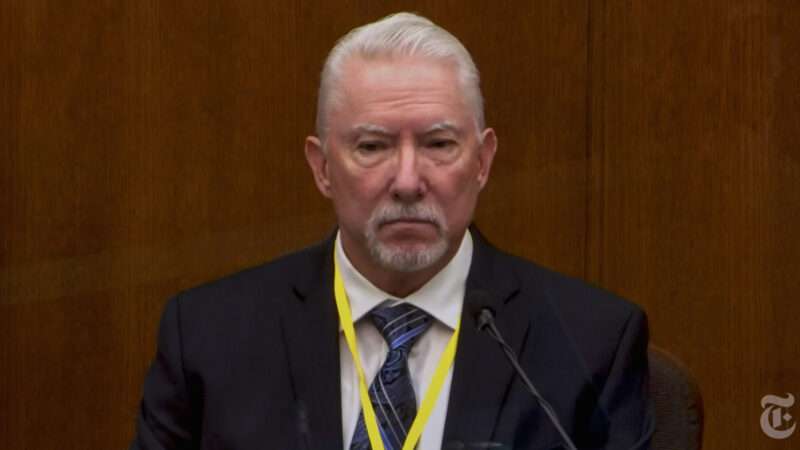
President Joe Biden’s modest rollback of former President Donald Trump’s border policies is attracting some novel legal challenges from anti-immigrant conservatives.
On Sunday, Arizona Attorney General Mark Brnovich sued the Biden administration in the U.S. District Court of Arizona over the federal government’s pause on border wall construction and the decision to end a policy requiring asylum seekers to remain in Mexico.
Both policy changes, argues Brnovich, should have had to undergo the kinds of environmental review normally required of federal infrastructure projects because they would increase Arizona’s population.
“Migrants (like everyone else) need housing, infrastructure, hospitals, and schools. They drive cars, purchase goods, and use public parks and other facilities. Their actions also directly result in the release of pollutants, carbon dioxide, and other greenhouse gases,” reads the complaint. “All of these activities have significant environment impact.”
His lawsuit takes issue with two specific actions of the Biden administration.
The first is a January 20 executive order freezing border wall construction and redirecting border wall funding to other priorities. The second is the administration’s February decision to start unwinding Trump’s Migrant Protection Protocol program (MPP) which required people who showed up at the southern border seeking asylum to return to Mexico while they wait for a court hearing. Because of the current administration’s changes, many of the people kept on the Mexico side of the border because of MPP are now being allowed into the U.S.
Both of those policy changes have proven controversial. The Government Accountability Office, the watchdog arm of Congress, said in March that it would examine the legality of the president’s pause of border wall funding.
The attorneys general of Texas and Missouri have also sued the Biden administration over its unwinding of MPP. Those lawsuits make more traditional legal claims that the administration’s decision was “arbitrary and capricious” and didn’t give state governments enough notice.
Brnovich is making the more unusual argument that the administration’s course change on immigration violates the National Environmental Policy Act (NEPA).
NEPA requires that federal agencies study the impacts of their actions on the environment, whether that’s funding a new highway or permitting a new power plant.
These environmental studies can be quite onerous. The average Environmental Impact Statement (EIS)—the most rigorous level of analysis required by NEPA—takes 4.5 years on average and results in reports 669 pages long on average.
NEPA also allows third parties to sue over environmental reports they feel didn’t adequately examine this or that environmental impact, stretching things out even longer.
Streamlining the NEPA process was a signature goal of the Trump administration. In July 2020, it finalized a number of administrative reforms that limited what environmental impacts federal agencies would have to consider and expanded the scope of how much federal involvement was necessary to trigger NEPA requirements.
Somewhat ironically, Brnovich is now looking to expand what kinds of federal actions should be subject to NEPA in order to save several other signature Trump administration immigration policies.
“As a direct and foreseeable consequence of the gaps in the nation’s border wall… migrants have been crossing the border in Arizona in greater numbers than ever before,” reads Brnovich’s complaint, citing the 171,000 migrants encountered by Customs and Border Patrol (CBP) on the border in March.
“Thousands of individuals have been released and are being released into Arizona as a result of the termination of this program that otherwise would never have entered the country,” continues the complaint in respect to the MPP unwinding. “Despite the intent to cause this outcome, at no time did Defendants undertake any analysis of the environmental impacts on the human environment in Arizona of this additional population.”
Brnovich’s lawsuit asks that Biden’s border wall pause and changes to MPP be overturned until a full Environmental Impact Statement is prepared on the consequences of all those migrants being allowed into his state.
Beginning in 2016, a collection of anti-immigrant groups, ranching associations, and conservation districts sued the then-Obama administration over its failure to subject its own immigration policies to NEPA review. That lawsuit was dismissed by a U.S. District Court in 2020 and is now being appealed.
The Arizona lawsuit points to a Ninth Circuit Court of Appeals decision in a NEPA case that held that an Environmental Impact Study sometimes needs to account for population growth.
Even with that decision, “it seems rather a jump to say that review is therefore needed for the whole class of government actions that invite an increase in population, whether or not directed at the development of a particular tract of land or group of tracts,” says Walter Olson, a legal scholar at the Cato Institute.
“Arizona actively encourages in-migration by promoting the attractiveness of the state as a place to live and do business. Should it have to conduct an environmental impact study assessing the impact on development and limited resources before it does this?” Olson says.
In an interview with Fox and Friends, Brnovich seemed to acknowledge the trollish nature of his lawsuit, saying that NEPA “is what the left always uses to stop highway projects and airport reconstruction.”
“We are saying that by stopping the wall construction they are violating NEPA by allowing more and more people coming into this country and that’s having a devastating impact on our environment and it’s also impacting the increase in population which will have all sorts of impacts down the road,” he continued, adding that migrants crossing over the border also litter a lot.
Arizona’s lawsuit is still fresh and the government has yet to respond. It will remain to be seen if a court will entertain the attorney general’s novel invocation of NEPA.
Legal merits aside, it is deeply concerning that some elected officials think we should be treating individual humans as pollutants by virtue of them coming from another country.
from Latest – Reason.com https://ift.tt/3snSrUR
via IFTTT



